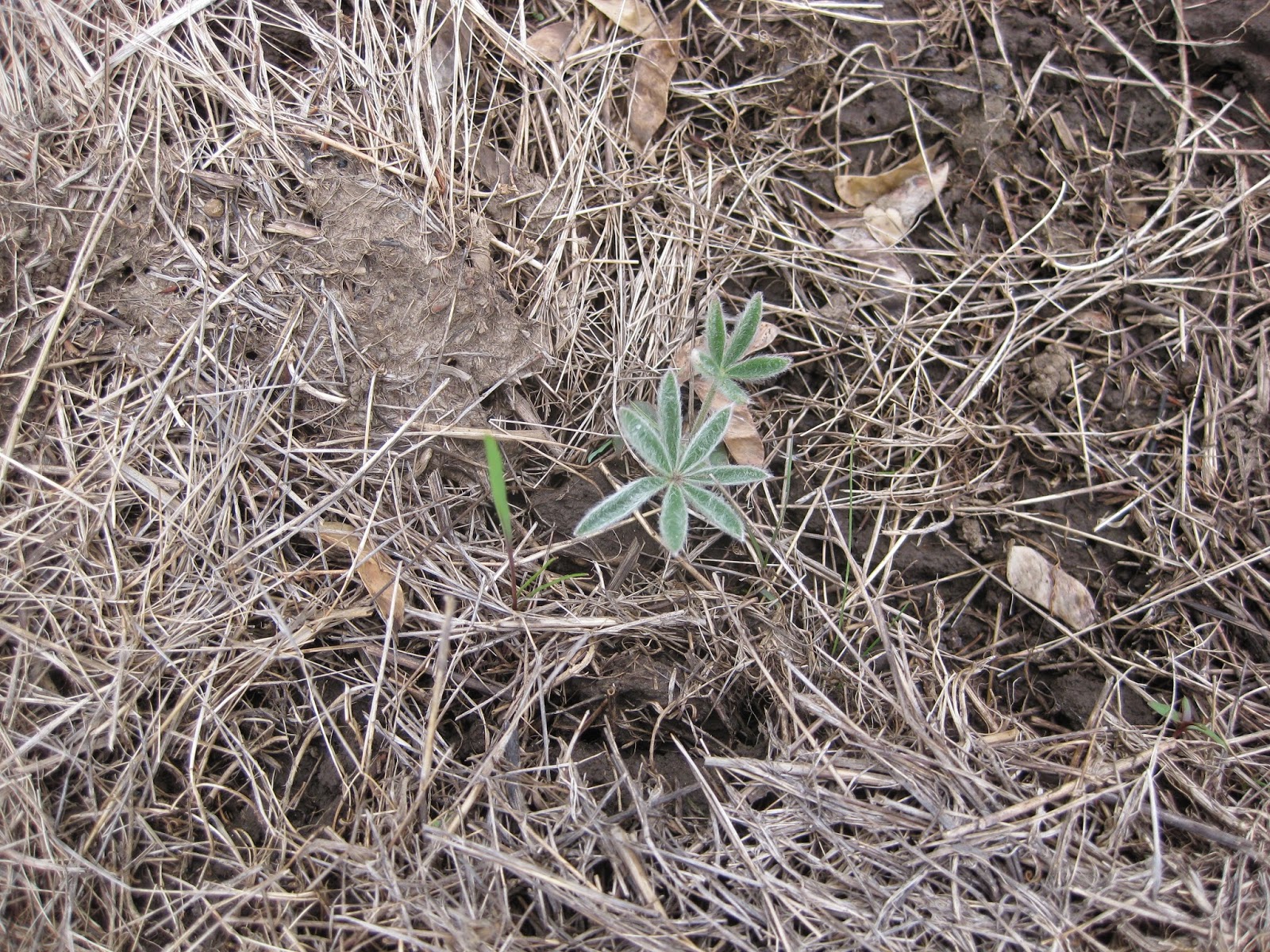The new project in the south is encouragingly free of weeds and sprouting all sorts of promise. The method suggested to me by the folks at the Palouse Conservation District and Thorn Creek Seeds (Jacie Jensen) appears to be the way to go (see posts last fall). In short, you clear an area, and then rake back to expose dirt and plant the seeds on that. Here is a little Silky lupine and a Lomatium ambiguum sprout from in among those pine trees...
I have been surprised in this area by several patches of Lomatium ambiguum that I didn't plant, as well as a patch of Upland larkspur that I didn't plant. Today I spotted a larkspur bud there, just about to open...
I think the most stunning bloom at the moment, though, is from a clump of Red besseya. The biggest clump was chomped by the evil deer (they chomp, but the plant is fine really), but this one escaped their onslaught.
It has been awhile since I have posted a shot from my standard view. Here is how it looked this afternoon. Spring!






